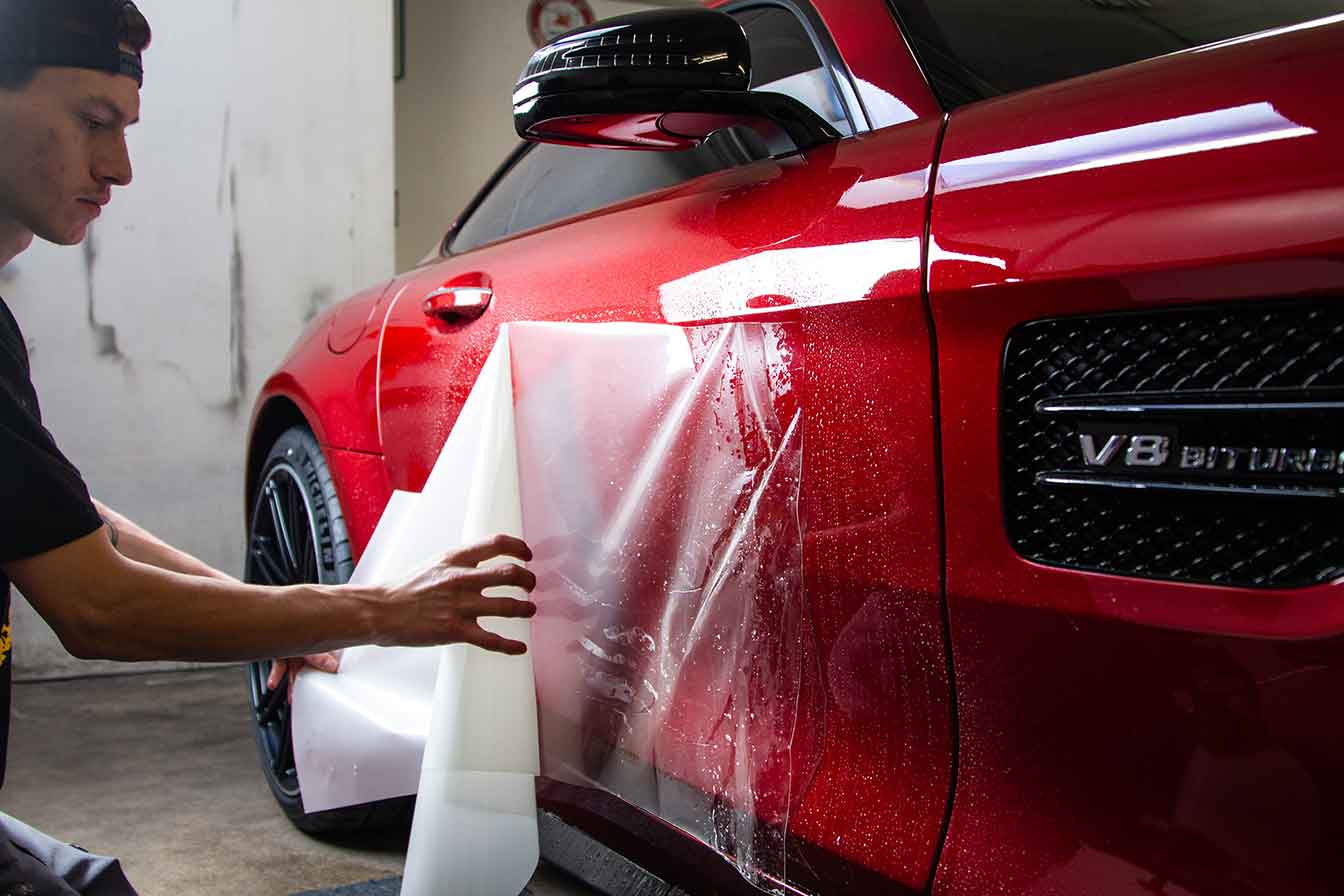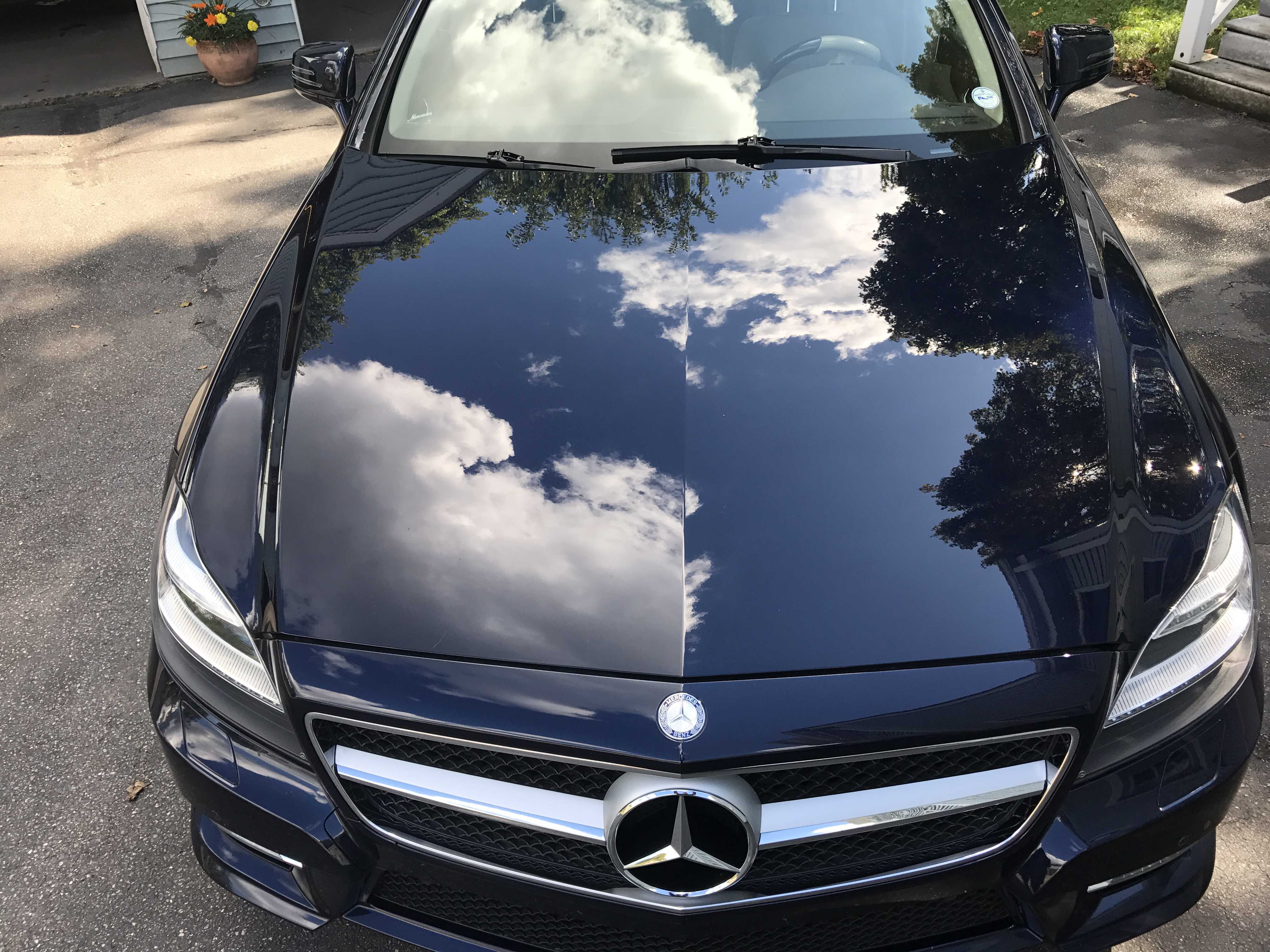Ceramic Coating vs. Conventional Wax: Which Gives Better Long-Term Security?
The argument in between ceramic layers and standard wax for car defense has actually garnered substantial focus amongst automotive fanatics and professionals alike. Ceramic finishings flaunt exceptional durability and resistance to ecological variables, yet the complexity of their application raises inquiries about access and usefulness.
Review of Ceramic Finish
Ceramic finish has actually gained considerable appeal among auto fanatics and detailers alike as a result of its sophisticated protective high qualities. This cutting-edge innovation is designed to create a long lasting, hydrophobic shield over an automobile's paint surface, substantially boosting its resistance to environmental contaminants such as dust, UV rays, and chemical stains. Unlike conventional wax, which offers a short-lived layer of protection, ceramic finishes bond at a molecular level with the paint, offering long-lasting toughness-- typically expanding beyond two years with correct maintenance.
The application procedure includes meticulous preparation of the lorry's surface, including cleaning and polishing to ensure optimum attachment. Once used, the coating cures to develop a durable layer that not just adds deepness and gloss to the paint however additionally streamlines maintenance. With its hydrophobic residential properties, ceramic layer allows water and dirt to slide off more easily, minimizing the frequency of laundries and minimizing the threat of swirl marks.
Additionally, ceramic coverings are available in various formulas, allowing individuals to pick items tailored to their specific demands and preferences. Overall, ceramic finishing stands for a significant development in paint protection innovation, providing premium performance compared to traditional choices.
Introduction of Conventional Wax
Generally pertained to as a staple in automotive treatment, wax works as a prominent choice for those looking for an uncomplicated method to boost and shield their lorry's paint - ceramic coating. Automotive wax usually makes up natural ingredients, such as carnauba, or synthetic compounds, developed to produce a protective layer on the surface area of the paint. This layer not just enhances the lorry's gloss and shine but also gives a barrier against ecological contaminants
The application of wax is generally straightforward, making it obtainable for both experts and do it yourself enthusiasts. It can be applied by hand or device, enabling for convenience in the outlining procedure. When used, wax needs a curing period, after which it solidifies to form a safety shell. Wax is also known for its ability to fend off water, promoting a beading result that helps in the avoidance of water places and rust.
However, while wax works for enhancing the aesthetic appeal of a car, it is crucial to keep in mind that the security it supplies might require extra regular reapplication compared to alternate products, such as ceramic layers. Generally, standard wax remains a preferred alternative for those prioritizing simplicity of usage and instant visual enhancement.
Durability and Durability Contrast
While both ceramic layers and traditional wax offer protective benefits for automobile paint, their resilience and durability differ substantially. Standard wax, normally made from all-natural carnauba or synthetic polymers, usually gives a safety layer that lasts around 3 to 6 months. This reasonably short lifespan necessitates routine reapplication to keep optimal security.
In contrast, ceramic coverings are crafted from innovative nanotechnology, developing a covalent bond with the paint surface. This results in a robust, hydrophobic layer that can endure for 2 to five years, relying on the item and ecological conditions. The superior longevity of ceramic get redirected here finishes is credited to their chemical structure, which provides enhanced resistance to scrapes, UV rays, and oxidation.

Defense Versus Environmental Aspects
Shielding a lorry's paint from environmental factors is essential for keeping its look and value gradually. Automobiles are constantly exposed to a variety of elements, including UV rays, bird droppings, tree sap, acid rain, and road crud, all of which can endanger the honesty of the paintwork.
Ceramic coverings supply a durable protection against these environmental assailants. Unlike typical wax, which can break down swiftly under UV direct exposure, ceramic coatings develop a long lasting, hydrophobic layer that resists the unsafe impacts of sunshine and ecological toxins. This advanced technology produces a chemical bond with the vehicle's surface area, using premium security that lasts for many years, even in extreme conditions.
Standard wax, while much easier to use, usually calls for regular reapplication and provides restricted resistance to impurities and UV rays. In time, it can break down, leaving the paint susceptible to scratches and oxidation. On the other hand, ceramic layers preserve their protective high qualities much longer, substantially minimizing the threat of paint damage and ensuring that the automobile retains its visual allure. Because of this, ceramic layers are significantly acknowledged as the exceptional choice for lasting defense against environmental factors.
Application and Upkeep Distinctions
The techniques of application and succeeding upkeep for ceramic finishes and standard wax vary considerably, impacting the overall customer experience and performance of each product. Ceramic coatings require a more detailed application procedure, commonly entailing surface prep work that consists of washing, sanitizing, and brightening the automobile. As soon as the surface prepares, the ceramic coating is applied why not check here in a regulated atmosphere, frequently requiring expert proficiency to guarantee appropriate curing and bonding to the paint.

While both products boost automobile appearance, the longer-lasting defense supplied by ceramic layers may view warrant their preliminary investment, in spite of the even more demanding application process. Alternatively, standard wax remains a prominent option for those seeking an easier, albeit temporary, option.

Verdict
In final thought, ceramic coatings show substantial advantages over conventional wax in regards to sturdiness and environmental management. With a lifespan expanding 2 to five years and remarkable resistance to UV rays, dust, and chemical discolorations, ceramic finishes supply an extra effective option for lasting lorry maintenance. The application procedure might call for professional proficiency, the resulting cost financial savings and minimized regularity of reapplication underscore the worth of ceramic layers for those seeking optimum automobile protection.
The argument in between ceramic layers and conventional wax for automobile protection has actually gathered considerable interest amongst vehicle lovers and specialists alike. Unlike typical wax, which supplies a temporary layer of protection, ceramic finishes bond at a molecular degree with the paint, offering long-lasting durability-- usually extending past two years with correct maintenance.
While both ceramic layers and traditional wax offer safety benefits for vehicle paint, their durability and long life differ substantially. For auto enthusiasts seeking long-term defense, ceramic coatings offer an engaging benefit over standard wax products.
In final thought, ceramic coatings show considerable benefits over conventional wax in terms of resilience and ecological security.